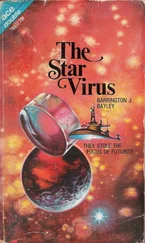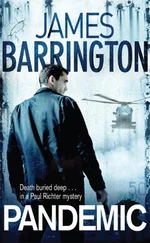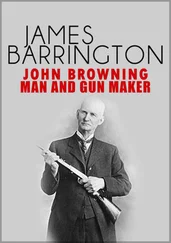‘Two contacts bearing one eight seven degrees range four point six kilometres. Low level, high speed, heading north. Contact now lost.’
‘Report all further contacts. Weapons free.’
The two SA-3 turrets on the south side of the Chiha-ri base hummed to life, the launcher swinging the needle-nosed missiles to point south. Once the current location and height of the intruders had been established, and the Low Blow fire-control radar had computed their track, the missiles could be fired.
Cobra formation, over Chiha-ri, North Korea
The Harriers were less than two hundred feet apart as they roared over the waypoint and swept into the next valley. Richter glanced down at the neat rows of buildings laid out in a grid pattern, almost like the suburbs of a small American town, then he focused ahead again.
‘Zeus is jamming I/D-band frequencies,’ Dick Long reported. ‘I see the missile site. I’ll go left; you go right.’
‘Roger.’ Richter eased the control column slightly to the right to increase the separation between the aircraft, and glanced ahead at the launch pads. From just over two miles away he could clearly see at least three Scud missiles standing erect on their TELs. The other thing he could see was that the pads were too far apart for an explosion on one missile to have any effect on another.
‘We’ll have to use the CRVs as well,’ he said.
‘Affirmative, but fire the Mavericks first. They’re more certain kills.’
Richter clicked an acknowledgement and checked the Multi-Purpose Crystal Display. He aimed the screen boresight – a large cross – at the centre of the closest Scud missile and selected his starboard-wing Maverick. Immediately the missile boresight – a smaller cross – appeared on the MPCD and within seconds the two crosses aligned, showing that the electro-optical guidance system was detecting sufficient contrast at the point of aim for weapon release. The Harrier twitched slightly as the Maverick accelerated away, its solid-fuel motor propelling it in seconds to a speed of over seven hundred miles an hour.
The Maverick is a ‘fire-and-forget’ missile, so immediately Richter aligned the screen boresight with the second Scud.
Chiha-ri missile base, North Korea
The Zeus was doing its job well. Every radar screen in the SA-3 control bunker was flooded with spikes, effectively blinding the operators. Without radar guidance, the SAM system was powerless to intercept the attacking aircraft.
But the North Korean troops manning two anti-aircraft gun emplacements on the south side of the missile base didn’t need radar for their weapons to function. They could see their targets and immediately began pumping high-explosive shells across the valley towards the incoming Harriers.
Cobra Two, over Chiha-ri, North Korea
As Richter aligned the boresights, the first anti-aircraft shells detonated about a hundred yards in front of, and slightly above, his Harrier. The sudden puffs of black seemed alarmingly close, and he inadvertently twitched at the very instant he released the second Maverick.
‘Keep low,’ Long radioed. ‘They probably can’t depress the barrels below the horizontal.’
Richter was already uncomfortably close to the valley floor, but obediently pushed the control column further forward. As he did so, his first Maverick exploded on contact with the Scud he’d targeted, and at almost the same moment Long’s missile impacted with a Scud on the left-hand side of the site.
Two down, four to go.
MiG-25 Foxbat, callsign Zero Six, over North Korea
Fifteen miles north of Chiha-ri, Gennadi Malakov slowed his Foxbat down to subsonic speed. If he stayed at Mach 2, the aircraft would overshoot the base and he’d probably never even see the British fighters, far less be able to engage them.
‘Radiate, and arm weapons,’ Malakov ordered, switched on his Saphir radar and prepared his four R-40T infrared-guided missiles.
Cobra Two, over Chiha-ri, North Korea
Ten seconds after the first two explosions, Richter’s second Maverick flew harmlessly past its target and impacted a rocky outcrop just beyond the pad, the detonation impressive but totally ineffective.
‘Bugger.’ The Maverick has about an eighty-five-per-cent kill probability, but because of the anti-aircraft fire he wasn’t certain that he’d got a proper lock-on with the weapon.
Long’s second missile scored a direct hit, but that still left three Scuds waiting on the launch pads.
Richter pulled his Harrier round hard to the left, selected the port-wing CRV7 rocket pod and immediately reversed direction. His S-shaped turn brought his aircraft around so that he was pointing almost directly at the second Scud on its TEL. The CRV7 Operational Pod contains nineteen unguided rockets, and has a range of only just over two miles, so he needed to be absolutely sure of his target.
He ignored the anti-aircraft fire, getting steadily closer as the North Korean gunners tracked him, and he stabilized the aircraft. He waited until he was perhaps a mile from the Scud, checked his aim carefully and fired the entire pod. Then he pulled the Harrier into a right turn and pointed it down towards the valley floor, heading north to start a second attack run from that direction.
The CRV7s spread out as they approached the target, something like a blast from a shotgun. Most missed, but six smashed into the TEL. More importantly, three hit the Scud itself, spearing through the thin aluminium skin of the missile and spraying liquid fuel across the concrete, fuel that almost immediately ignited. In seconds, the launch pad was an inferno.
Four of the Scuds were destroyed, but that still left two missiles intact.
Chiha-ri missile base, North Korea
Inside the Chiha-ri command bunker it was noisy chaos. Orders were being shouted and ignored, men were standing staring at their telemetry screens, telephones were ringing but nobody was answering them, and through the armoured-glass windows leaping flames were clearly visible as the remains of the four destroyed Scuds were consumed by their own fuel.
But there were still two missiles left. The commanding officer, unable to make himself heard over the cacophony, drew his pistol and fired two rounds into the wooden floor. Immediately the noise stopped.
‘Do your jobs,’ he screamed. ‘Launch the missiles.’
And with frequent fearful glances through the windows, the technicians bent to their tasks.
MiG-25 Foxbat, callsign Zero Six, over Chiha-ri, North Korea
Malakov could see the Chiha-ri site from five miles away – the four raging fires were obvious, plumes of thick black smoke rising into the air above them. But what he couldn’t see was any sign of the attacking aircraft. Perhaps, he wondered, they’d already made their escape, but if they had they wouldn’t get far. He’d make sure their pilots never left North Korea alive.
Cobra Two, over Chiha-ri, North Korea
‘We’ve got company,’ Dick Long said. ‘I’m detecting Fox Fire radar from the north, which means the ‘bats are about to join the party, and we’ve got exactly one Sidewinder between us. This is probably going to get quite exciting.’
‘Roger that. Break. Alpha Three, what’s the range of those bandits?’
‘Inside six miles, now subsonic and in descent.’
Richter was just north of the firing complex, in a left turn to line up on one of the two remaining Scuds. He glanced to his right and could clearly see some half a dozen aircraft heading directly towards him.
‘Visual the bandits,’ he called, then turned his attention back to the matter in hand. His Harrier had only a single Sidewinder remaining, so engaging the MiG-25s in air-to-air combat would be a very uneven match. But destroying the Scuds had a much higher priority than his personal survival, and he still had one CRV7 pod.
Читать дальше












